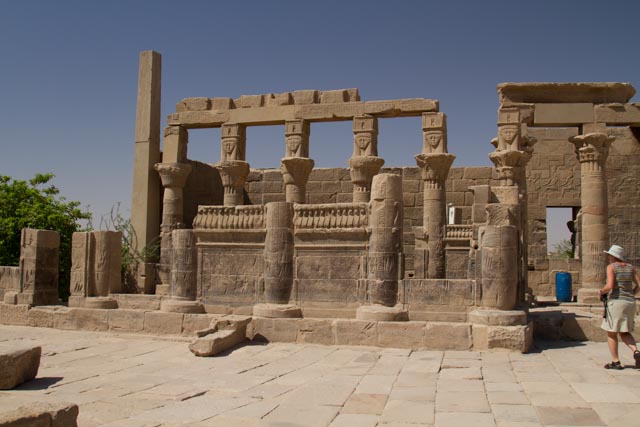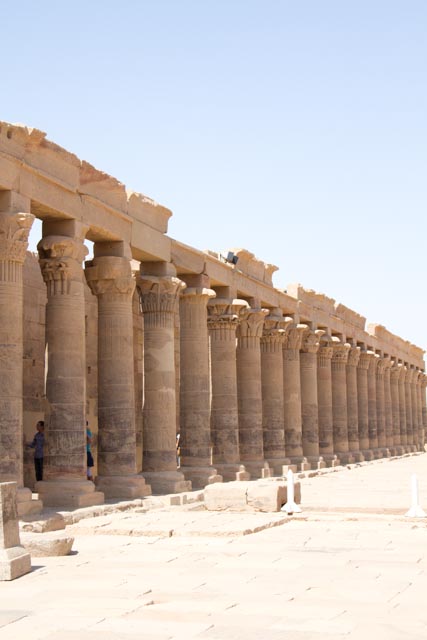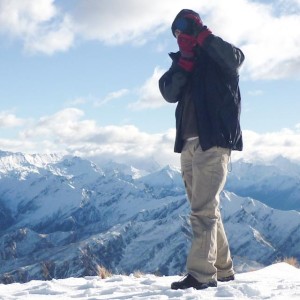Philae Island – What is there to see
There is so much to see on Philae Island that I have split the information into two posts. This is the first section of all the things to see on the Island. There is quite a lot to see – and we were fortunate in having an excellent guide to highlight many of the important features.
So here is the first lot of things that can be seen

Temple of Isis
The largest and most important temple on Philae is the great Temple of Isis, which is oriented south to north. It was entered on the south through the Hall of Nectanebo (named after the Nectanebo, pharaoh of the Thirtieth dynasty of Egypt)
The Hall of Nectanebo leads into the large Outer Court. It is enclosed by a wall known as the first pylon on the north and colonnades on the east and west sides. Here can also be seen a section of the solid embankment wall that apparently enclosed the main part of the island and was interrupted at several points by steps leading down to the water.
First Pylon

The first pylon is 45.5m wide and 18m high. It consists of two towers and a central doorway, which was decorated with reliefs by Nectanebo. On the front of the east tower is a huge figure of Ptolemy XII grasping a band of enemies by the hair and raising his club to smite them, with Isis, the falcon headed Horus of Edfu and Hathor on the left. Above are two reliefs of Ptolemy XII presenting the crowns of Upper and Lower Egypt to Horus and Nephthys and offering incense to Isis and Harpocrates. There are similar reliefs on the west tower; at the foot are demotic and Greek inscriptions.
A doorway in this tower, with reliefs by Philometor, leads directly to the entrance to the Birth House. In front of the pylon were originally two granite obelisks erected by Euergetes II and two granite lions.
East Colonnade
The east colonnade is unfinished, with only 6 of 16 columns completed. The others are roughly hewn with unfinished capitals. In the rear wall of the east colonnade are five doors which led into various chapels.

West Colonnade
The west colonnade is 93m long and has 31 (originally 32) plant columns 5.10m high, with capitals in a variety of forms. Most columns bear reliefs of the Emperor Tiberius making offerings to the gods. The roof of the colonnade is decorated with stars and flying vultures. On the rear wall are two rows of reliefs depicting the emperor, usually Augustus or Tiberius, dedicating gifts to the gods. From the colonnade a subterranean staircase leads down to a small Nilometer.
A Nilometer was a means (typically a structure) of measuring the Nile River’s clarity and for measuring the water level of the Nile river during the annual flood. This is something that I remember seeing – but didn’t get a photo !!
West of the forecourt, just behind the first pylon, is the Birth House (Mammisi). This was dedicated to Hathor-Isis in honor of the birth of her son Horus and was where the king conducted rituals securing his legitimate dependancy from Horus. It is surrounded on all four sides by colonnades, the columns in which have foliage capitals surmounted by sistrum capitals. The walls, columns and screens between the columns are covered with reliefs and inscriptions, mostly by Euergetes II, Ptolemy XII, Augustus and Tiberius. Most notable are the reliefs in the last chamber, which depict Horus as a falcon in the swamps of the Delta, Isis suckling Horus in the swamps, and other scenes from Horus’ childhood.

For more information about Philae Temple
- 2014-03-20 – Unfinished Obelisk, High Dam, Philae Temple, High Tea
- Egyptian Goddess – Hathor
- Egyptian Goddess – Isis
- Egyptian Mythology – Horus
- Philae Temple
- Philae Temple – Part 1- Overview
- Philae Temple – Part 2 – Introduction
- Philae Temple – Part 3 – History
- Philae Temple – Part 4 – What to See
- Philae Temple – Part 5 – What to See
- Philae Temple – Part 6 – Our Experience
